“The joys of the table belong equally to all ages, conditions, countries and times; they mix with all other pleasures, and remain the last to console us for their loss.” (Jean Anthelme Brillat-Savarin)

Talk about a kid in a candy store. As soon as my copy of Joys of the Table arrived, I polished my silver soup spoon, donned my nattiest bib (velvet trim, don’t you know), licked my chops, then ever so intently sipped, munched, chewed, relished and savored each and every poem in this tasty tome.
What a marvelous feast! The 100 or so poems (some with recipes) by 75 poets from around the country are served up in six courses: Amuse Bouche, What We Eat, Food and Love, Geography of Food, Kitchen Memories, and Food and Mortality. It was nice to see quite a few familiar favorites (Diane Lockward, Sharon Auberle, Barbara Crooker, Andrea Potos, Jacqueline Jules, Susan Rich, Annelies Zijderveld), as well as discover many new-to-me poets whose delicious verses left me craving more of their work (Lisa Kosow, Eric Forsbergh, Katharyn Howd Machan, Dianne Silvestri, Anne Meek, and Christie Grimes to name a few).
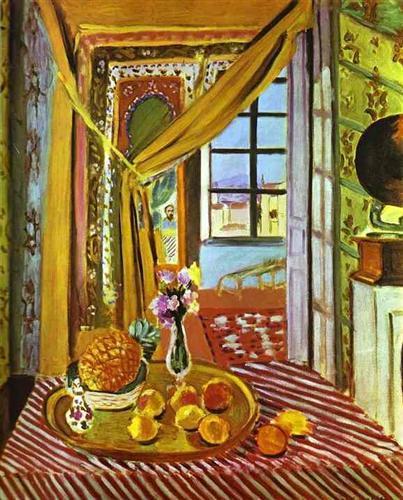
In a publisher’s interview, Editor Sally Zakariya was asked why she decided to put together an anthology of food poems:
I wondered that myself more than once! But really, food in its many aspects—personal, sentimental, sensual, universal—is a natural subject for poetry. I realized I had written a number of poems about remembered meals, nurturing cooks, and food as a symbol of communion and contentment, and I found that other poets I know had, too. And because food is so basic to our relationships with family and friends and lovers, I thought many poets would like to have such an anthology on their own shelves—and perhaps to give copies to their favorite cooks.
There certainly was no shortage of submissions — Sally received hundreds of additional poems worthy of being included — but ultimately her criteria for selection was subjective. I do like her taste in poems, noting that there was a higher percentage of poems that resonated with me in this anthology than in others.
I especially liked the Geography of Food section, since the poems were flavored with sensory impressions of places like Mexico, Nepal, the Aleutian Islands, Japan, India, Vietnam, France, and Iran. But I found much to love throughout the collection, and today I’m happy to share fruity poems from two poets I’ve only just met in the pages of this book, Kim Roberts and Charlotte Mandel. I thank them both for providing a little backstory about their poems and sharing recipes perfect for summer enjoyment. Bon Appétit!
* * *
🍍 KIM ROBERTS 🍍
Pineapples were imported to the American colonies from the Caribbean beginning in the 17th century; it was one of the exotic fruits that could survive a long sea journey. Colonial sea captains in New England would sometimes place a pineapple outside their front doors to signal their safe return from a journey, and to show they would now be accepting visits from guests, so they became associated with hospitality. It became a fashionable motif: you can find pineapples reproduced in architecture, textiles, on china, etc. To be served a pineapple meant you were getting the host’s best.
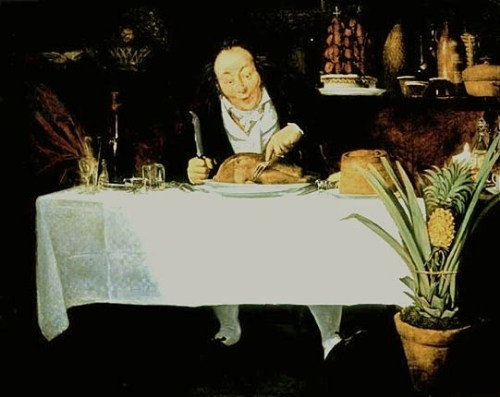
THE INTERNATIONAL FRUIT OF WELCOME
A pineapple is the perfect gift
to bring to a blind date.
A pineapple is like a blind date:
spiky and armored at first,
with the hope of sweetness inside.
A pineapple is the perfect housewarming gift.
You don’t have to wrap it,
it doesn’t spill inside your car.
It comes in its own house.
A pineapple is the perfect birthday gift.
You might prefer a coconut,
that planet molten at the core,
but the pineapple has a better hairdo,
better wardrobe; it never
goes out of style.
Think of all those historic houses
with pineapple bolsters, pineapple finials,
pineapples carved above lintels.
Such a sophisticated fruit:
every sailor wants one.
~ Posted by permission of the author, copyright © 2015 Kim Roberts. All rights reserved.
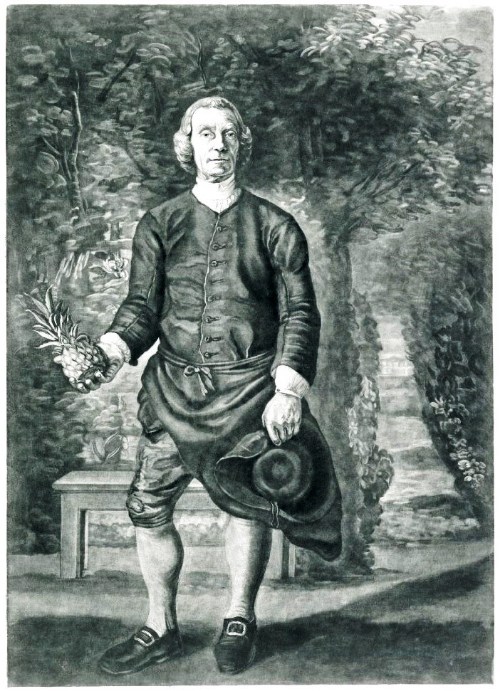
*
PINEAPPLE LASSI
- 1 cup fresh pineapple chunks
- 2 cups low-fat plain yogurt
- 1/4 cup milk
- 1/4 cup water
- 2 T. sugar
- Ice cubes
Put all ingredients in your blender and blend well for just a few seconds until the mixture turns frothy. Serve immediately.
*

Kim Roberts is the author of four books of poems, most recently Fortune’s Favor: Scott in Antarctica, a collection of blank verse sonnets based on the journals of British explorer Robert Falcon Scott, whose team was the second to reach the South Pole in 1912 (Poetry Mutual, 2015). She co-edits Beltway Poetry Quarterly and the web exhibit DC Writers’ Homes. Her website: http://www.kimroberts.org.
* * *
🍑 CHARLOTTE MANDEL 🍑
The poem began as an imaginary ancestor search, and this lovely great-grandfather came to me. I did experience that worm in peach scare as a small child, and the rest of the story followed.
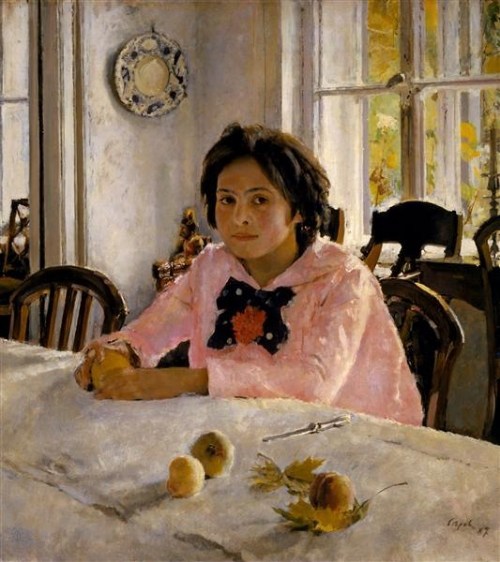
GREAT-GRANDFATHER
He greets children by simply
bending his knees
so they speak face to face, serious-mouthed.
I am four years old, and very serious.
A worm alive in my half-eaten peach
has happened to me. This man brings scents of wood,
tobacco, wool and plain soap. His vest’s
leather buttons gleam like owl eyes. He’s
read every book in the world, tells how
worm chose a fragrant swinging nest,
blossom petals rolled up like window shades,
the seed’s kernel drank gifts of leaf and root
till fruit enfolded the worm who, ousted
by my gouging bite, lifted its black greedy
muzzle into glare of sun, wriggled down
across my hand crawling slimy wetness
over dimpled knuckles, and with our barely
devoured fruit, fell to earth. I am shouting
running. This grandfather leads me to an orchard,
reaches for another rose globe of peach,
with his thumbs opens it into two round
perfect halves. The tree’s long curved leaves toss
like breathing. He eats one half. I savor the sweet-
tart flesh of the other.
~ Posted by permission of the author. Copyright © 2015 Charlotte Mandel. All rights reserved.
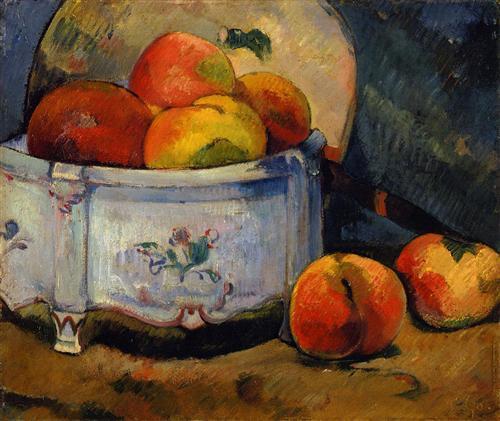
*
MINTED POACHED PEACHES
- 6 firm, ripe peaches
- 2 cups sugar
- 1 vanilla bean, split (or 1/2 teaspoon pure vanilla extract)
- 2 strips lemon zest
- 1 large mint sprig, plus more for serving
- 4 cups water
Using a paring knife, lightly score an X into bottom of peaches (this will help with peeling later). In a large saucepan, combine sugar, vanilla, lemon zest, mint, and water. Cook over medium heat, stirring occasionally, until sugar has dissolved, about 2 minutes.
Add peaches and enough water to cover. Bring to a bare simmer, and cook, turning occasionally, until peaches are easily pierced with a skewer, 6 to 10 minutes, depending on ripeness of peaches.
Remove peaches with a slotted spoon; let cool slightly. Using a paring knife, peel peaches; return to syrup. Serve with mint sprigs.
*
 Charlotte Mandel has published nine books of poetry — the most recent, Through a Garden Gate (2015) and Life Work (2013), both from David Robert Books. She is winner of the 2012 New Jersey Poets Prize. Previous books include two poem-novellas of feminist biblical revision—The Life of Mary and The Marriages of Jacob. Her verse play “The Gardener’s Wife” appears in Verse Wisconsin. She edited the Eileen W. Barnes Award Anthology, Saturday’s Women. As an independent scholar, she has published a series of articles on the role of cinema in the life and work of poet H.D. She recently retired from teaching poetry writing at Barnard College Center for Research on Women. Click here to visit her official website.
Charlotte Mandel has published nine books of poetry — the most recent, Through a Garden Gate (2015) and Life Work (2013), both from David Robert Books. She is winner of the 2012 New Jersey Poets Prize. Previous books include two poem-novellas of feminist biblical revision—The Life of Mary and The Marriages of Jacob. Her verse play “The Gardener’s Wife” appears in Verse Wisconsin. She edited the Eileen W. Barnes Award Anthology, Saturday’s Women. As an independent scholar, she has published a series of articles on the role of cinema in the life and work of poet H.D. She recently retired from teaching poetry writing at Barnard College Center for Research on Women. Click here to visit her official website.
* * *
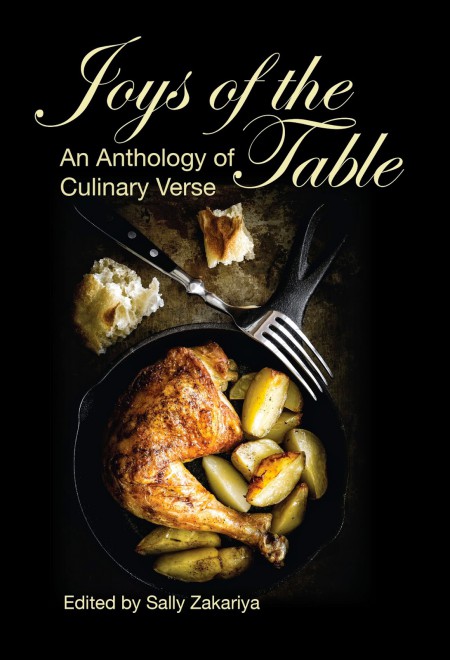
JOYS OF THE TABLE: An Anthology of Culinary Verse
edited by Sally Zakariya
published by Richer Resources Publications, May 2015
Delectable Poems by 75 poets + a sprinkling of recipes, 158 pp.
* Visit the publisher’s webpage for more info, including an interview with the editor, bios of all the poets, and a preview of the collection.
* Click here for Diane Lockward’s post about the book which includes two more sample poems and a recipe.
* * *
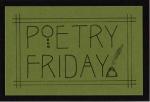 The lovely poet, author, educator, and champion chocolate cake baker Mary Lee Hahn is hosting the Roundup at A Year of Reading. Take her some peaches and pineapples, and feast on the full menu of poetic offerings being served up in the blogosphere this week.
The lovely poet, author, educator, and champion chocolate cake baker Mary Lee Hahn is hosting the Roundup at A Year of Reading. Take her some peaches and pineapples, and feast on the full menu of poetic offerings being served up in the blogosphere this week.
———————————————
Copyright © 2015 Jama Rattigan of Jama’s Alphabet Soup. All rights reserved.

Oh, I LOVE the idea of this book, and I am already picturing digging in to it with Ramona! Thanks, Jama!
LikeLike
Lots of delectable verse here to satisfy a variety of appetites. Hope you get to see this one soon, Karen!
LikeLike
so pleased and honored to be in this beautiful book, and to be mentioned again in your yummy column–thank you, Jama!
LikeLike
Was happy to see your fine poem included in this collection, Sharon! Brought back fond memories of that black bean soup. 🙂
LikeLike
Isn’t it beautiful how each food contains a history, as featured in these poems? It looks like a wonderful anthology — I see many poets whose work I admire listed here.
LikeLike
This collection is packed with deliciousness — definitely an abundant banquet worth savoring again and again. 75 poets!
I like the histories contained in today’s poems too — personal memories/experiences merged with wider research.
LikeLiked by 1 person
Thanks for the introduction to this delectable book, Jama! We had fresh pineapple with dinner last night – what a coincidence. I love these lines from Roberts’ poem:
“the pineapple has a better hairdo,
better wardrobe; it never
goes out of style.” – so true!
LikeLike
That’s my favorite part of the poem :). As someone who grew up in pineapple country, I truly appreciated Kim’s clever words.
LikeLike
I love BOTH of those poems — but I think the worm and the peach must have been just such a poignant and memorable moment in that poet’s life. Wow, I love the description of the grandfather, that’s really beautiful.
Meanwhile, I’m afraid to attempt pineapple lassi; wouldn’t it curdle!? But, no… mango doesn’t. *goes away, intrigued* Thanks, as always, for sharing something so fun.
LikeLike
Hmmm, never thought about the curdling possibility. I used to make smoothies with yogurt and pineapple all the time, but I used canned pineapple (which I also use if adding fruit to jello since if you use fresh the jello won’t set).
LikeLike
I knew that pineapples were a symbol of hospitality but I didn’t know why. Thanks for including that explanation! Unfortunately, pineapples don’t agree with me, so I won’t be trying pineapple lassi, but the minted poach peaches sound delicious. (Without the worm, of course!) Thanks so much for sharing, Jama!
LikeLike
It was nice of Kim to provide that explanation. While growing up in Hawaii, I was surrounded by pineapples, but didn’t learn about it as a symbol of hospitality (esp. during Colonial times) until I moved to Virginia and visited Williamsburg.
LikeLike
“And because food is so basic to our relationships with family and friends and lovers…”
So true!
Both poems were great, but that peach with the worm was like a movie! I could imagine every bit of the wormy adventure and felt an inward YUCK! So glad it had a peachy ending 😉
LikeLike
Nice how that one small memory turned into quite a narrative :).
LikeLiked by 1 person
Another one for the wish list! Thanks for sharing a taste of this book and I love all the artwork you served on the side. Funny, I just ate a wondrous peach not an hour ago, but now I’ve got a hankering for another… how do you suppose that happened, Jama?
LikeLike
Well I don’t know — you’ve been seduced by a peach poem :D!
LikeLike
A pineapple is like a blind date:
spiky and armored at first,
with the hope of sweetness inside.”
I love that! And I love The Great-Grandfather poem as well. It packs a lot in seemingly simple verse. You really get a sense of the man, the disconcerted child and their loving relationship. Great ending too!
As always, great picks, Jama!
LikeLike
Glad you enjoyed the poems, Iza. I also liked that warm loving relationship that comes across in the peach poem. And the pineapple poem had some unique perspectives :).
LikeLike
I’m not a cook, at all, but every time I read your blog, I think about giving it a try. I love both of these poems. So different and yet both really perfect. I’d love to show middle school kids the pineapple one and see how many facts they could find embedded, then let them try writing their own. And the peach poem is a perfect narrative. Both definitely keepers!
LikeLike
You could definitely have a lot of fun with both poems — and of course your students could get some great sensory details if they tasted a bit of peach or pineapple before writing their poems. 🙂
LikeLike
How wonderful that the peach poem is about a GREAT grandfather! “His vest’s
leather buttons gleam like owl eyes.” Love her imagery, and that the child gets back up on the horse, as it were.
LikeLike
Yes, there aren’t many poems about great-grandfathers. Charlotte has woven in some lovely descriptive details.
LikeLike
What a FABULOUS collection! Perfect for you!
LikeLiked by 1 person
Yes, quite perfect!
LikeLike
Fresh summer peaches are my absolute favorite fruit. My mouth is watering in anticipation. Both of these poems are a delight, Jama. I’m writing up an order card for the library as soon as I get to work on Monday!
LikeLiked by 1 person
Yay! There are so many tasty treasures in this collection.
I love peaches too — nothing like a fresh peach pie in late summer. 🙂
LikeLike
I had my first fresh peach today … thankfully, no worm! Thanks for being honest and saying this anthology in particular had more poems that resonated. Sometimes when I browse anthologies I think I must not be cultured enough to enjoy more of the selections. :-0 I’ll have to add this one to my list!
LikeLike
With anthologies it’s sometimes a crap shoot — you might like a few poems and feel so-so about the others. This anthology surprised me with the number of poems that I really liked.
LikeLike
Really yummy! Wait. I mean ‘Really Great Poetry’! 😉
LikeLike